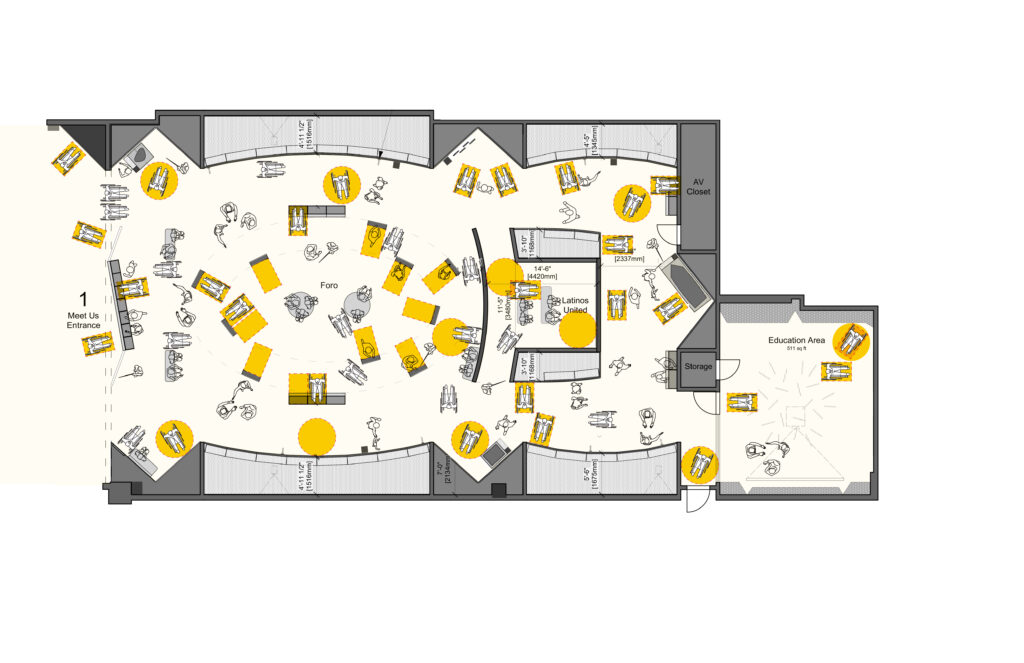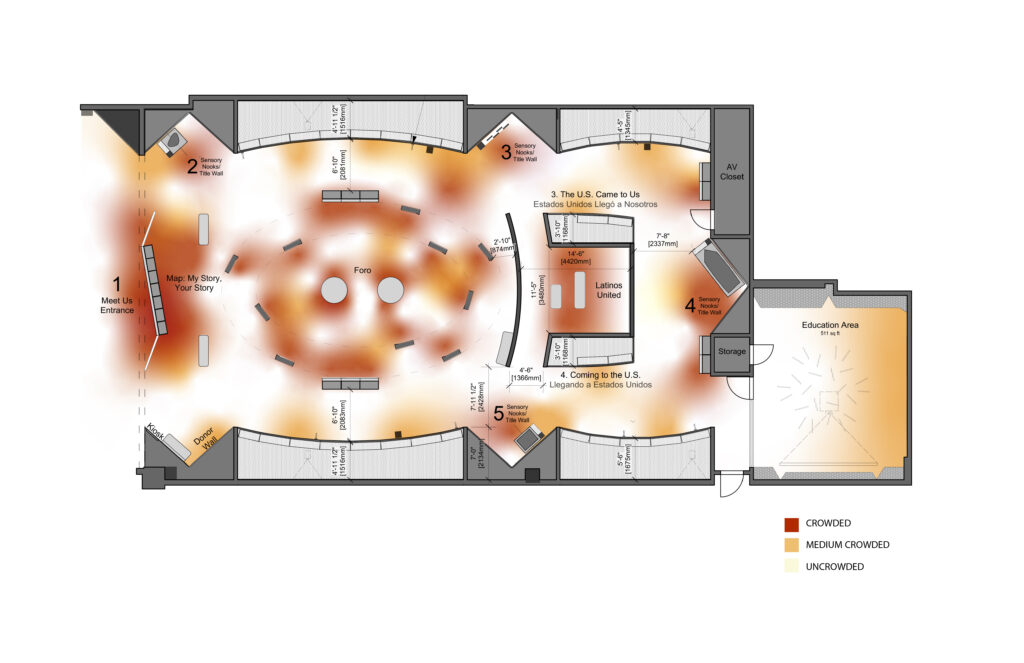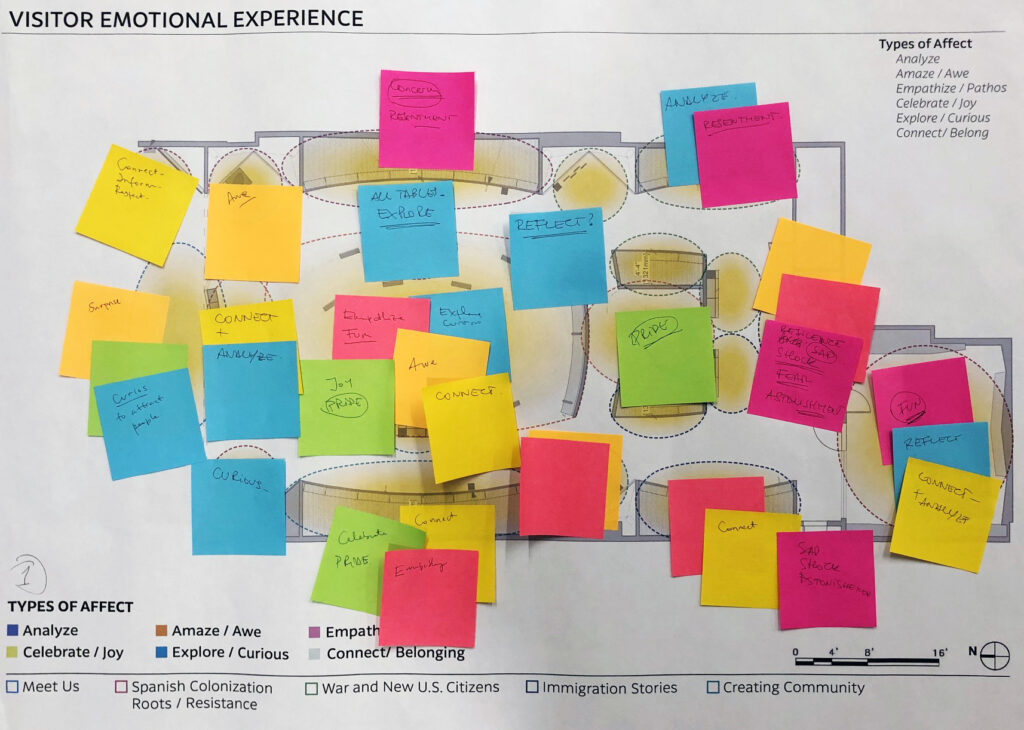
The new Molina Family Latino Gallery, scheduled to open in the spring of 2022 in the National Museum of American History, will be the Smithsonian’s first gallery on the National Mall to celebrate the Latino experience in the United States. The 4,500-square-foot gallery will open with ¡Presente! A Latino History of the United States, an exhibition that will shine a light on the historical and cultural legacy of U.S. Latinos, according to the Smithsonian Latino Center, and will invite visitors to “participate in a conversation about our nation’s past, present, and future.”
The English and Spanish bilingual gallery has been planned under the stewardship of the Smithsonian Latino Center with financial support from the family of Dr. C. David Molina and the Smithsonian National Latino Board, as well as corporate and foundation support. The gallery will offer a wide range of stories and information about the Latino experience and contributions within the U.S., and will include digital media interactives, displays that showcase artifacts and contemporary art, a theater, and a Learning Lounge. Visitors will engage with first-person digital storytellers, data-driven maps, videos, and illustrated biographies.
The gallery is being designed by Quinn Evans in collaboration with the Smithsonian Latino Center, Museum Environments for exhibit design, and Potion for digital media design. The Smithsonian’s goal of reaching “millions of diverse, intergenerational audiences” has guided the planning and design. Through its Access Smithsonian initiative, the institution strives to provide “consistent, effortless access” to programs, collections, and facilities.
An Inclusive Design Process
The Molina Family Latino Gallery is designed to present content effectively to a broad audience, including people with a variety of physical abilities, while also accommodating diverse learning modes and preferences. To accomplish this, the design team has expanded the design process beyond universal design to include a diverse group of stakeholders, testing with user experts (experts based on lived experience), and the powerful tool of sensory mapping. The use of sensory mapping, focusing on inclusive experiences, is a first for the Smithsonian in designing gallery spaces.
“These maps are useful for planning museum environments to ensure universal accessibility, from arrival through the exhibit areas and other spaces,” says Alyson Steele, FAIA, LEED AP, principal-in-charge for Quinn Evans. “This process can help in designing a truly inclusive experience that extends well beyond the basics of ADA regulatory requirements. Once a space is open to the public, the maps can also be helpful to visitors as they plan their museum experience.”
For the Latino Gallery, sensory mapping has been used as a design tool to address the diversity of experiences (ease of access to content, inclusion of a variety of learning modes) as well as the quality of the experience (creating comfortable spaces and allowing for emotional responses). The maps include features such as:
- Physical – sightlines, interactive reach, space for travel and group interactions
- Sensory – lighting, sound, tactile interactions
- Social – areas for engagement, observation, and respite
- Emotional – reactions to content and physical surroundings
“Sensory maps provide information and insight regarding the type of experiences available,” says Steele. “For example, are there spaces that are visually calming, or where sounds are minimized? Are there places to avoid crowds or to sit and rest? Are there meaningful options for someone who has vision or hearing loss? Are there areas where groups can interact? Most importantly, can every visitor access the content, understand the primary messages, and have an enjoyable experience?”
Experience, Learn and Transform
Programming for the Molina Family Latino Gallery is based on the Smithsonian Institution’s learning-continuum framework, focusing on three concepts: “Experience, Learn and Transform.” The gallery will be divided into five primary zones:
- A “Meet Us” wall that greets and engages visitors just outside the gallery entrance and includes an introductory accessibility panel.
- Cases and nooks along the perimeter displaying historical objects and relating stories.
- The “Somos” theater experience featuring contemporary voices on what it means to be Latino-American.
- “Foro,” a plaza and community space where visitors can engage with interactive storytellers and each other.
- A “Learning Lounge” suitable for multipurpose use, including school gatherings and other public events.
The gallery experience will include content for visual learners and auditory learners, as well as kinesthetic options for those who prefer physical experiences and learn best through hands-on activities. Recognizing that no single tool, technology, approach, or experience will serve everyone well, the goal for the new gallery is to provide diverse ways to access and experience content and enjoy meaningful, layered experiences.

A Better Design for All
The design of the gallery addresses accessibility in multiple ways, including physical space, graphics (legible and bilingual), and access to content. The introductory accessibility panel will orient visitors to the accessible features of the gallery, including the audio descriptions and stories, tactile experiences, Universal Access Points (UAP), and universal keypads.
All touch experiences are paired with keypads, located throughout the gallery, that allow visitors who are blind, or have low vision or limited mobility, to navigate the interface. The keypads include navigational buttons, an audio jack for access to audio descriptions, and speed and volume controls. Visitor orientation and consistent implementation of assistive technology ensure all visitors can readily access content throughout the gallery. The keypads will become a standard for the Smithsonian Institution.
Additional accessibility features include quiet hours when the volume is lowered for visitors on the Autism Spectrum, those with sensory processing disorders, or hypersensitivity to sound. Audio descriptions of visual content will be provided for visitors who are blind, have low vision, or have brain-based disabilities. Audio handsets with inductive loops will be available to visitors with hearing impairments, and the gallery, theater, and Learning Lounge will all feature assisted listening systems.
Using the sensory maps, testing with user experts, and including more voices in the design and planning process, the design team was able to assess how varying components work individually and then layer together to provide visitors with a multitude of options to access content. This multi-faceted approach will provide a richer, more enjoyable experience, as well as a more enduring comprehension of the content.
About the Authors
Abby Tourtellotte and Carolina Uechi are associates with Quinn Evans. Quinn Evans has six offices throughout the U.S., including Richmond and Washington, D.C. The firm has completed nearly 200 design projects for the Smithsonian Institution. The gallery design team also includes Mueller Associates, Available Light, and Convergent Technologies Design Group.




